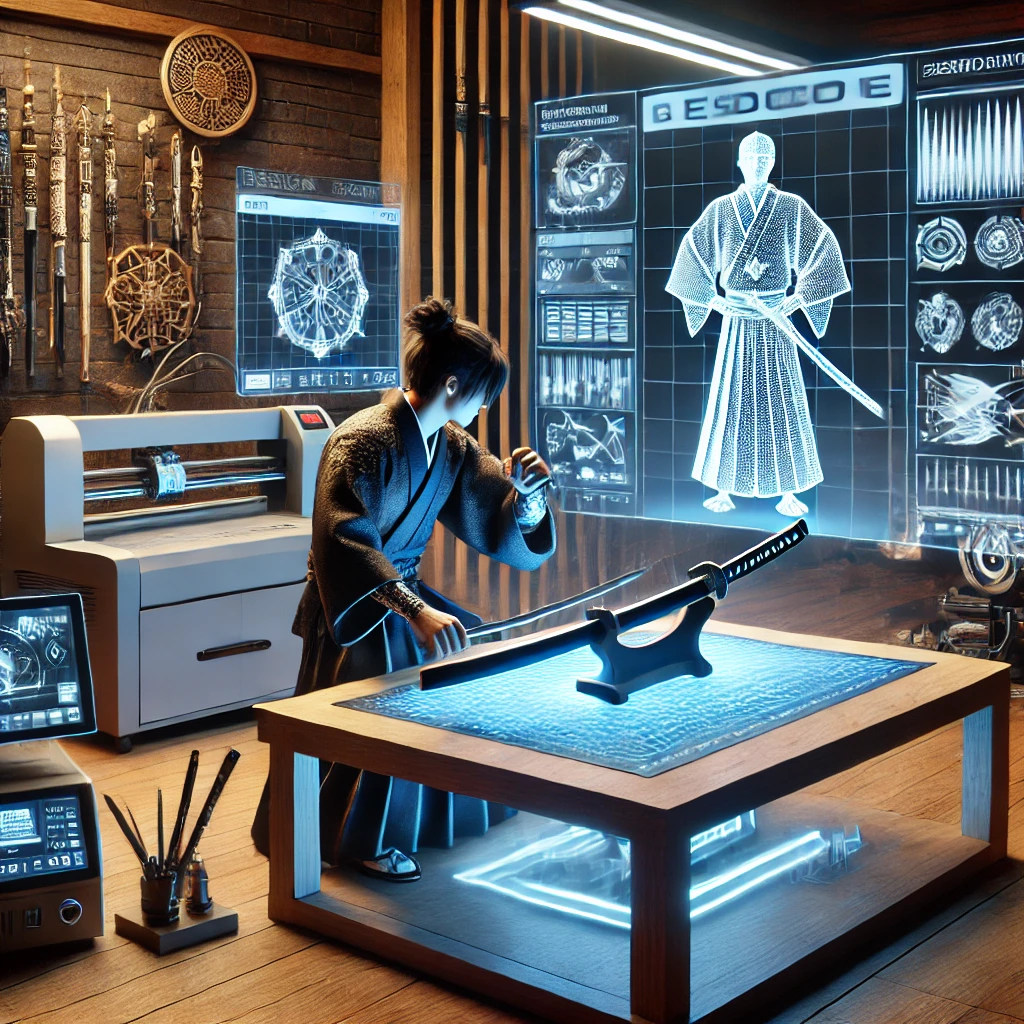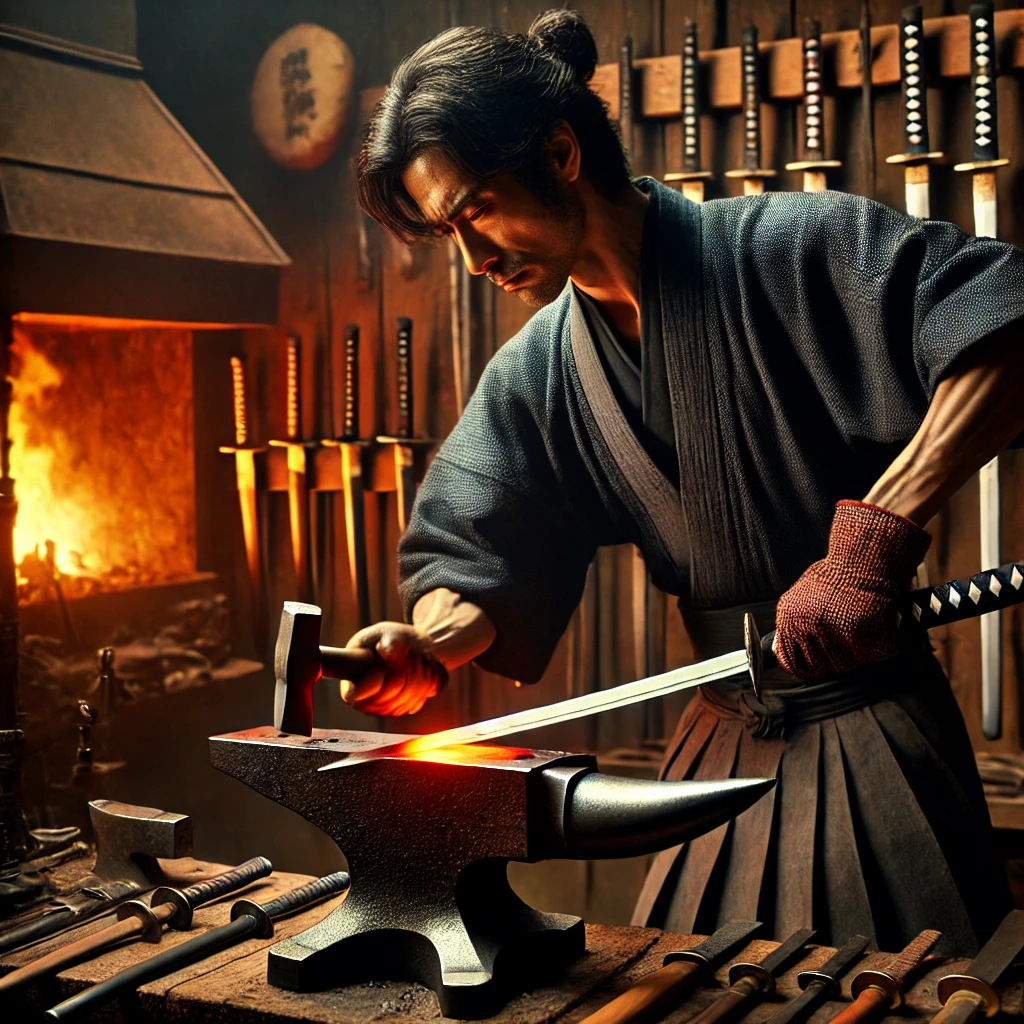The samurai katana sword has a rich history rooted in tradition. However, as the world evolves, the future of the katana faces challenges. Tradition and modernity often clash, creating a unique dynamic. This article explores the future of katana swords, focusing on how these two forces interact.

I. The Historical Importance of the Samurai Katana Sword
The samurai katana sword has been central to Japanese culture for centuries. Traditionally, samurai warriors wielded these swords with great skill. The katana was more than a weapon; it was a symbol of honor and discipline. Each samurai katana sword was crafted meticulously, reflecting the values of the time. This deep connection between the katana and the samurai created a lasting legacy.
1. The Samurai’s Bond with the Katana
Samurai warriors considered their katana swords as extensions of their souls. This bond was sacred and unbreakable. The samurai katana sword symbolized a warrior’s honor, loyalty, and readiness to fight. This connection made the katana much more than a mere weapon; it was a living part of the samurai’s identity.
2. The Evolution of the Katana in History
Over time, the design and use of katana swords evolved. As warfare changed, so did the needs of the samurai. The katana adapted to these changes, ensuring its continued relevance in battle. However, despite these evolutions, the katana always remained true to its roots, preserving its core values of honor and discipline.
II. The Craftsmanship of Katana Swords
Creating katana swords requires immense skill. Traditional Japanese katana craftsmen follow age-old methods. These techniques, passed down through generations, ensure the katana’s quality and strength. The process involves heating, folding, and hammering steel repeatedly. This creates a blade that is both strong and flexible. The samurai katana sword’s curved design allows for precise, powerful cuts.
1. The Traditional Sword-Making Process
The process of making a Japanese katana is highly detailed. Craftsmen start with raw steel, which they heat and fold multiple times. This folding process removes impurities and creates a blade that is both sharp and resilient. The blade is then tempered and polished, bringing out its final form. This traditional process is labor-intensive but results in a katana sword of unmatched quality.
2. Challenges Faced by Modern Craftsmen
In modern times, this craftsmanship faces challenges. New technologies offer different ways to create swords. However, many craftsmen still prefer traditional methods. They believe that preserving these techniques is essential. Yet, modern tools and materials sometimes integrate with traditional methods. This fusion of old and new creates a unique blend of craftsmanship.
III. The Impact of Modern Technology on Katana Swords
Modern technology impacts many aspects of life, including the creation of katana swords. Advanced tools allow for more precise measurements and cuts. Some craftsmen use modern machines to aid in the sword-making process. This can lead to more consistent quality in katana swords.
1. Technological Innovations in Sword Crafting
Technology has introduced new materials and methods in sword crafting. Laser cutting and computer-aided design (CAD) allow for more precise shaping of the blade. Modern metallurgy offers stronger, lighter materials, which could revolutionize katana sword-making. These innovations promise new possibilities for katana swords.
2. Balancing Tradition and Innovation
However, the use of technology in making Japanese katana swords sparks debate. Some purists argue that technology diminishes the art of sword-making. They believe that traditional methods should remain untouched. Others see technology as a way to enhance and preserve the katana’s legacy. They argue that using modern tools can lead to innovations in design and durability. This clash between tradition and modernity reflects a broader trend in society. As technology advances, it often challenges traditional practices. The future of katana swords will likely involve balancing these two forces.
IV. The Role of the Japanese Katana in Modern Culture
Despite technological advancements, the Japanese katana retains its cultural significance. In Japan, katana swords are still revered as symbols of honor and tradition. They are displayed in homes, museums, and shrines. Martial arts, such as kendo and iaido, continue to use katana swords in practice. These arts keep the spirit of the samurai alive in modern times.
1. Katana Swords in Popular Culture
Furthermore, the katana sword has become a popular symbol in global culture. Movies, anime, and video games often feature the samurai katana sword. These portrayals help to maintain the katana’s image as a symbol of Japan’s rich history. They also introduce the katana to new audiences, ensuring its legacy endures.
2. Preserving the Katana’s Cultural Significance
In modern times, preserving the katana’s cultural significance is crucial. As more people learn about the katana through popular culture, it is important to maintain its historical and cultural context. This ensures that the katana sword continues to be respected as more than just a weapon; it is a symbol of a proud tradition.
V. The Future of the Katana Sword
The future of the katana sword lies at the intersection of tradition and modernity. As society evolves, so too must the katana. However, this does not mean abandoning tradition. Instead, it means finding ways to integrate modern technology while preserving the katana’s essence.
1. Innovations in Materials and Design
One potential future for katana swords involves using new materials. Modern materials could make katana swords lighter, stronger, and more durable. However, this must be done without compromising the katana’s traditional design and craftsmanship. Another possibility is the use of digital technology in the design process. Computer-aided design (CAD) could allow for more precise and innovative katana designs.
2. Preserving the Katana’s Legacy in the Modern World
Yet, as these changes occur, it is essential to remember the katana’s roots. The samurai katana sword is more than just a weapon; it is a symbol of Japan’s cultural heritage. Preserving this heritage while embracing modernity is the challenge facing future generations.

VI. Conclusion
In conclusion, the future of the katana sword involves navigating the clash between tradition and modernity. The samurai katana sword holds a significant place in Japanese culture. Its craftsmanship and symbolism are deeply rooted in history. However, as technology advances, new opportunities and challenges arise.
The future of katana swords will likely involve blending traditional techniques with modern innovations. This balance will ensure that the katana remains relevant while preserving its cultural significance. The Japanese katana sword will continue to be a symbol of honor, discipline, and craftsmanship for generations to come.